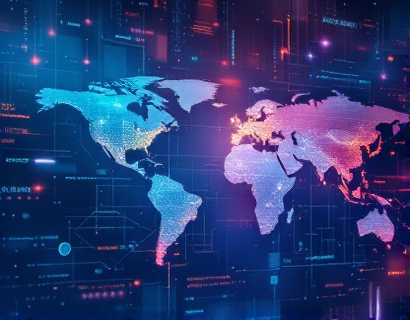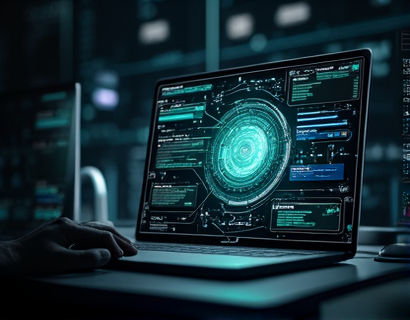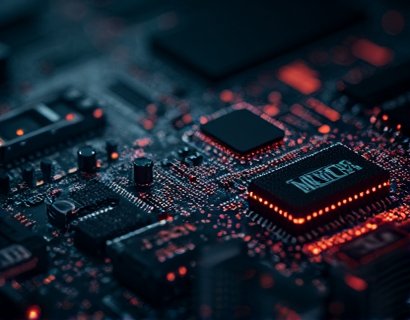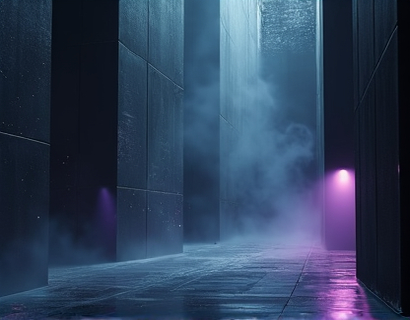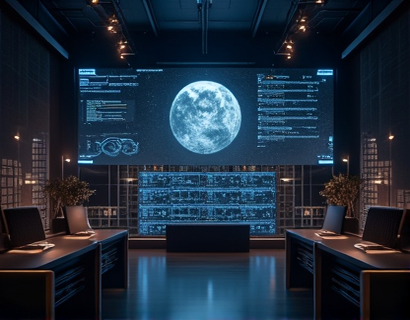Revolutionizing Memorial Creation: The Synergy of AI and Blockchain for Lasting Tributes
The concept of memorializing loved ones has evolved significantly with the advent of technology. Traditional methods, while heartfelt, often fall short in providing a secure, personalized, and lasting tribute. The integration of Artificial Intelligence (AI) and Blockchain technology offers a groundbreaking solution, crafting online memorials that are not only secure and personalized but also ensure the preservation of memories for generations to come. This article delves into how this cutting-edge platform is transforming the way we honor our deceased, providing a unique and meaningful experience for the bereaved.
The Need for Innovative Memorial Solutions
The loss of a loved one is one of life's most profound experiences, leaving an indelible mark on those who remain. Traditional memorials, such as physical monuments or albums, serve as tangible reminders but often lack the personalization and security needed in the digital age. With the increasing number of people seeking online platforms to create and share memories, there is a growing demand for solutions that combine the intimacy of personal tributes with the robustness of modern technology.
Bereaved families and individuals are often overwhelmed by the task of creating a lasting tribute. The emotional burden is compounded by the need for a secure and private space where memories can be shared and preserved. Traditional methods may expose sensitive information to unauthorized access or data breaches, leading to a loss of cherished memories. The integration of AI and Blockchain addresses these concerns by providing a secure, decentralized, and personalized platform for memorial creation.
AI: Enhancing Personalization and Emotional Connection
Artificial Intelligence plays a pivotal role in crafting personalized memorials. AI algorithms can analyze vast amounts of data, including photos, videos, messages, and personal stories, to create a comprehensive and emotionally resonant tribute. This technology ensures that the memorial reflects the unique personality and life of the deceased, making it a truly personal and heartfelt tribute.
One of the key benefits of AI in memorial creation is its ability to curate content dynamically. For instance, AI can generate a timeline of the deceased's life, highlighting significant events, achievements, and milestones. It can also create a digital scrapbook that includes photos, letters, and other memorabilia, all organized in a way that tells a cohesive story. This level of personalization is difficult to achieve with traditional methods, as it requires manual curation and a deep understanding of the individual's life.
Moreover, AI can assist in language and content generation, helping to craft messages and tributes that resonate with those who visit the memorial. Natural Language Processing (NLP) can be used to create personalized condolence messages, ensuring that each visitor receives a thoughtful and relevant response. This not only enhances the emotional connection but also provides a sense of comfort and support during a difficult time.
Blockchain: Ensuring Security and Immutability
Blockchain technology is renowned for its security and transparency, making it an ideal partner for memorial creation. By leveraging blockchain, the platform ensures that all data is stored in a decentralized and immutable ledger, protecting sensitive information from unauthorized access and tampering. This is crucial for maintaining the privacy and integrity of the memorial.
Each memorial created on the platform is assigned a unique blockchain address, ensuring that it cannot be altered or deleted once it is uploaded. This immutability provides peace of mind to the bereaved, knowing that their loved one's memory will be preserved forever. Additionally, blockchain's decentralized nature means that the memorial is not controlled by a single entity, reducing the risk of data breaches and ensuring that the tribute remains accessible to authorized users.
Smart contracts, a feature of blockchain technology, can be used to manage access and permissions for the memorial. For example, family members can be granted specific rights to view, edit, or share the memorial, ensuring that the tribute remains a private and secure space. This level of control is particularly important for sensitive information and personal stories that may not be suitable for public sharing.
Combining AI and Blockchain for a Seamless Experience
The true power of this platform lies in the seamless integration of AI and Blockchain. AI handles the personalization and content curation, while Blockchain ensures the security and immutability of the memorial. This combination creates a robust and user-friendly experience for the bereaved.
When a user decides to create a memorial, they can upload various media files and personal stories. AI algorithms analyze this content, generating a structured and emotionally resonant tribute. The platform then uses blockchain to securely store and manage the memorial, ensuring that it is accessible only to authorized individuals. The user can also set permissions for different family members or friends, allowing them to contribute to the memorial or view it privately.
The platform can also include features such as virtual candles, digital flowers, and other symbolic gestures of remembrance. These elements, powered by AI, can be customized to reflect the deceased's interests and preferences, adding another layer of personalization. For instance, if the deceased was an avid gardener, the platform can generate a virtual garden with their favorite flowers, complete with a digital plaque bearing a personal message.
Preserving Memories for Future Generations
One of the most significant advantages of using AI and Blockchain for memorial creation is the ability to preserve memories for future generations. Traditional memorials can deteriorate over time, and digital files can be lost or corrupted. However, a blockchain-based platform ensures that the memorial remains intact and accessible indefinitely.
The decentralized nature of blockchain means that the memorial is not stored on a single server, reducing the risk of data loss. Additionally, the use of cryptographic hashes ensures that any changes to the memorial are transparent and verifiable, maintaining the integrity of the tribute. This level of preservation is invaluable for families who want to pass on their loved one's memory to future generations, providing a lasting legacy that transcends time.
Moreover, the platform can include features that allow for the addition of new content over time. As family members and friends contribute new stories, photos, or videos, the AI can integrate this content seamlessly, ensuring that the memorial evolves and remains relevant. This dynamic approach ensures that the tribute remains a living testament to the deceased's life, rather than a static record.
Enhancing the User Experience
The user interface of the platform is designed to be intuitive and emotionally supportive. The process of creating a memorial is guided by a series of prompts and templates, making it easy for users to navigate and personalize their tribute. The AI-driven suggestions help users organize their content in a meaningful way, ensuring that the memorial is both comprehensive and cohesive.
For those who may struggle with the emotional task of memorial creation, the platform offers support resources. This includes access to counseling services, memory-sharing communities, and guided meditation sessions. These features provide a holistic approach to grief, offering comfort and support alongside the memorial creation process.
The platform also includes a sharing feature, allowing users to share the memorial link with family, friends, and even the broader community. This can be particularly helpful for those who wish to spread the word about the tribute or gather condolences from a wider network. The blockchain-based access control ensures that only authorized individuals can view the memorial, maintaining the privacy and dignity of the tribute.
Case Studies and User Testimonials
To illustrate the impact of this platform, consider the story of Sarah, who lost her mother to cancer. Using the platform, Sarah created a digital memorial that included a timeline of her mother's life, a photo gallery, and a collection of letters and messages from loved ones. The AI-generated content helped Sarah organize her memories in a way that felt both personal and comprehensive.
Sarah's brother, John, expressed his gratitude for the platform's security features, stating, "I felt reassured knowing that our mother's memory is safe and will never be lost. The ability to add new content as we remember more moments has been incredibly comforting." Another user, Emily, highlighted the emotional support provided by the platform, noting, "The guided meditation sessions and memory-sharing community helped me process my grief in a supportive environment."
These testimonials underscore the platform's ability to not only create secure and personalized memorials but also to provide a supportive community for the bereaved. The combination of AI and Blockchain technology ensures that the memorial is both a lasting tribute and a source of comfort during a difficult time.
Conclusion
The integration of AI and Blockchain in memorial creation represents a significant advancement in how we honor our loved ones. This platform offers a secure, personalized, and lasting tribute that transcends traditional methods, providing a unique and meaningful experience for the bereaved. As technology continues to evolve, the potential for innovation in this space is vast, promising even more sophisticated and empathetic solutions for memorial creation.
In conclusion, the future of memorials is here, combining the heart of human memory with the strength of modern technology. This platform stands as a testament to the enduring power of love and remembrance, ensuring that the memories of our loved ones live on for generations to come.










